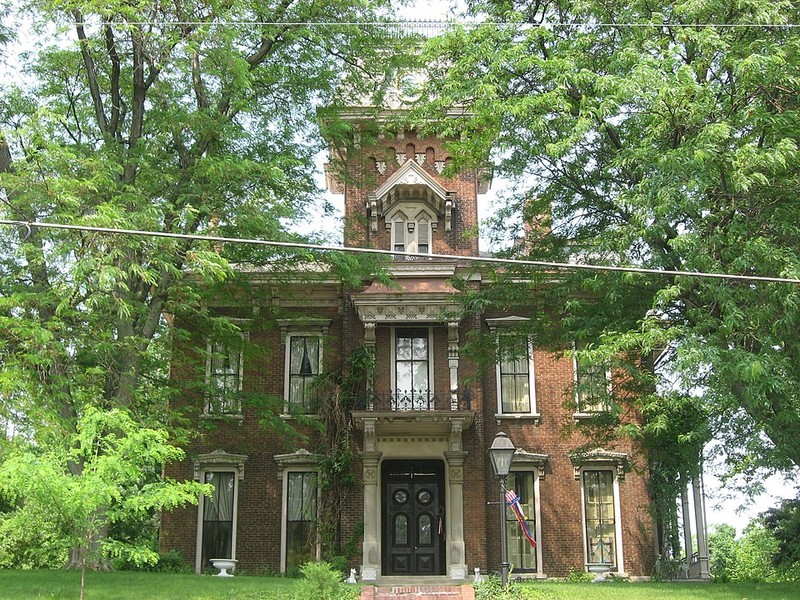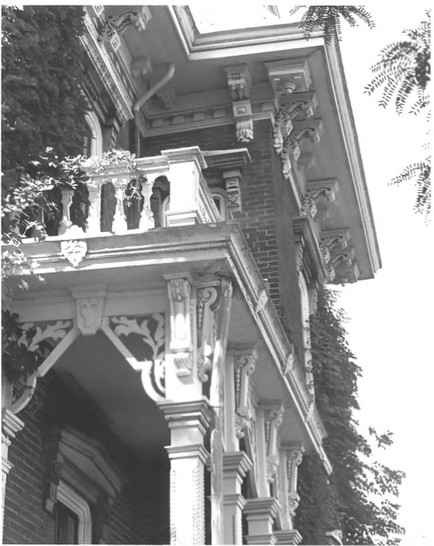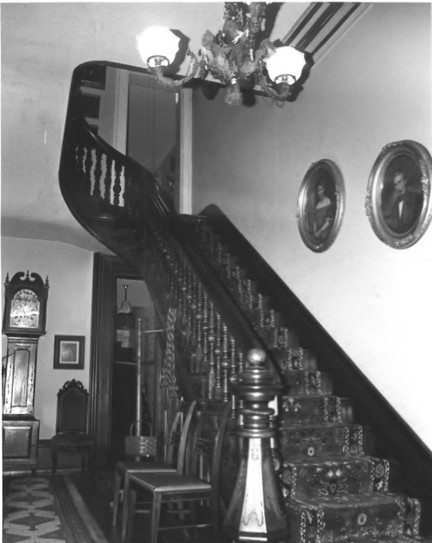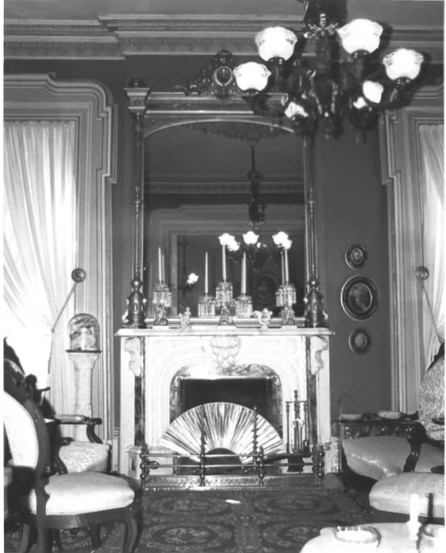Judge Cyrus Ball House
Introduction
Text-to-speech Audio
Images
2011 photo of Cyrus Ball House by nyttend

1982 photo of detail of front porch columns and brackets, Ball House, by Harry Mohler

Entry staircase in Judge Cyrus Ball House (Harry Mohler 1982)

Drawing room fireplace in Ball House, NRHP nomination photo (Mohler 1982)

Backstory and Context
Text-to-speech Audio
The Judge Cyrus Ball House is five bays wide, with two identical bays on either side of the elaborately detailed three-story entrance tower. The ground-floor windows are accented by pedimented, bracketed hood molds of carved limestone. Elaborate wood carvings and stained glass decorate the entryway in the ground level of the tower. Much of the building's original woodwork and hardware has been retained in the interior. Three rooms contain elaborate marble fireplaces. Nineteenth-century paintings of the family by a local artist, George Winter, still adorn the home's walls.
The two-story brick carriage house has a gable roof and a rectangular plan. The service doors and windows have segmental arches while the carriage doors have tudor arches. Detailed surviving records tell the itemized costs and sources of the home's building materials. A railroad carload of slate was delivered from Buffalo, New York to cover the roof, for example. The entire project cost nearly $25,000, an incredible amount for a single home in the 1860s.
Cyrus Ball married Rebecca Gordon of Philadelphia in 1838. He became a cashier in the state bank by the 1840s and was elected an Associate Judge of the Court of Common Pleas in 1857. His wife was an author and published articles in magazines. It is said that the couple's former house in Lafayette was a stop on the Underground Railroad for slaves escaping the South. Ball went on to become the first president of the Lafayette Artificial Gas Company.
Later generations of the Ball family who occupied the home included a local attorney, Cable Gordon Ball. He served in the 1930s as City Attorney and in the 1950s as a State Representative. Cable Ball died in 1981; his wife, Evelyn Osterman Ball, passed away in 2005.
Cite This Entry
Paonessa, Laurie. "Judge Cyrus Ball House." Clio: Your Guide to History. April 14, 2020. Accessed February 20, 2025. https://theclio.com/entry/99093
Sources
Ball, Cecily Gordon Bottum. NRHP Nomination Form for Judge Cyrus Ball House. National Register. Washington, DC. National Park Service, 1982.
Erickson, Sara. Historic Neighborhoods of Lafayette - West Lafayette, HomeOfPerdue.com. Accessed April 13th 2020. https://www.homeofpurdue.com/contact/storyideas/Historic%20Neighborhoods.pdf.
Historic Ninth Street Hill. Prospect Hill, Historic Ninth Street Hill Neighborhood Association. Accessed April 13th 2020. www.ninthstreethill.org/BallEstate.htm.
https://en.wikipedia.org/wiki/Judge_Cyrus_Ball_House#/media/File:Judge_Cyrus_Ball_House_in_the_morning.jpg
https://npgallery.nps.gov/GetAsset/9557cf43-c7e3-4319-a8ca-9bfbec28424e
https://npgallery.nps.gov/GetAsset/9557cf43-c7e3-4319-a8ca-9bfbec28424e
https://npgallery.nps.gov/GetAsset/9557cf43-c7e3-4319-a8ca-9bfbec28424e

